Frequently Asked Questions About Coffee: Myths vs Facts
Coffee is more than just a beverage; it is a cultural phenomenon, a daily ritual for millions, and a complex topic filled with myths and misconceptions. As a coffee enthusiast, you may find yourself inundated with questions about brewing methods, types of beans, and even the health implications of coffee consumption. This article addresses frequently asked questions about coffee, debunking myths and providing factual information to enhance your coffee experience.
Understanding the intricacies of coffee can lead to better brewing practices and a more enjoyable cup of coffee. Whether you are a novice or a seasoned barista, knowledge about coffee can transform your appreciation for this beloved drink. This article will also touch on essential coffee brewing tips and delve into understanding coffee temperature, which plays a significant role in the final taste of your brew.
Common Myths About Coffee
Myth 1: Dark Roast Coffee Has More Caffeine
One of the most prevalent misconceptions is that dark roast coffee contains more caffeine than its lighter counterparts. In reality, the caffeine content in coffee is primarily determined by the type of beans used and the brewing method, not the roast level.
-
Light roasts typically have slightly more caffeine because the beans are denser and retain more caffeine during the roasting process.
-
Dark roasts may taste bolder and stronger due to the roasting method, but this does not equate to a higher caffeine content.
-
The brewing method significantly impacts caffeine extraction; for example, espresso has a higher caffeine concentration than drip coffee, regardless of roast level.
Myth 2: Coffee Stunts Growth
Many people grew up hearing that coffee consumption stunts growth, particularly among children and adolescents. However, scientific research does not support this claim.
-
There is no evidence to suggest that coffee consumption in moderation affects growth or height.
-
The origins of this myth likely stem from concerns about caffeine's stimulating effects on children.
-
Moderation is key; excessive caffeine intake can lead to restlessness or sleep disturbances but does not affect physical growth.
Myth 3: Coffee Is Dehydrating
Another common belief is that coffee leads to dehydration due to its caffeine content. While caffeine is a mild diuretic, the effects are often overstated.
-
Research indicates that moderate coffee consumption does not lead to dehydration.
-
The water content in coffee contributes to overall hydration levels.
-
For most people, drinking coffee can be part of a healthy hydration strategy.

Understanding Coffee Temperature: Why It Matters
The Importance of Brewing Temperature
The temperature at which coffee is brewed significantly influences the extraction of flavors and aromas. The ideal brewing temperature for coffee typically falls between 195°F and 205°F.
-
Brewing coffee at temperatures below 195°F can result in under-extraction, leading to a sour taste.
-
Conversely, brewing above 205°F can cause over-extraction, yielding a bitter flavor.
-
Maintaining the correct temperature ensures a balanced extraction of the coffee's natural oils and acids.
Serving Temperature and Flavor Profile
Once brewed, the temperature at which coffee is served also affects its flavor. Coffee enthusiasts often overlook this aspect, but it is crucial for an optimal tasting experience.
-
Coffee served too hot can mask subtle flavors, making it difficult to appreciate the nuances of the brew.
-
Allowing coffee to cool slightly can enhance the tasting experience, revealing a broader spectrum of flavors.
-
A general guideline is to serve coffee between 130°F and 160°F for the best flavor profile.
Coffee Brewing Tips for Enthusiasts
Selecting the Right Beans
The foundation of a great cup of coffee lies in the quality of the beans. Choosing the right beans is essential for achieving the desired flavor.
-
Opt for fresh, whole beans rather than pre-ground coffee to retain flavor and aroma.
-
Experiment with different bean origins to discover unique flavor profiles, such as Ethiopian beans known for their fruity notes or Colombian beans with a balanced sweetness.
-
Consider the roast level; light roasts emphasize acidity and brightness, while dark roasts offer a bolder, richer flavor.
Grinding Your Coffee
The grind size of your coffee beans plays a critical role in the brewing process. Different brewing methods require specific grind sizes to achieve optimal extraction.
-
For espresso, a fine grind is necessary to create the pressure required for extraction.
-
For French press, a coarse grind is ideal to prevent sediment from permeating the brew.
-
Invest in a quality burr grinder to ensure consistent grind size, which is vital for even extraction.
Brewing Methods and Techniques
There are various brewing methods, each with its unique characteristics and flavor profiles. Familiarizing yourself with these methods can enhance your coffee experience.
-
Pour-over: This method allows for precise control over the brewing time and water temperature, resulting in a clean and flavorful cup.
-
French press: This immersion method produces a rich and full-bodied coffee, as the grounds steep in hot water for several minutes.
-
Aeropress: Known for its versatility, the Aeropress can produce both espresso-style coffee and traditional drip coffee depending on the technique used.
Common Mistakes in Coffee Brewing and How to Avoid Them
Inconsistent Grind Size
One of the most common mistakes in brewing coffee is using an inconsistent grind size. This can lead to uneven extraction, resulting in a bitter or sour taste.
-
Always use a burr grinder for more uniform particle size.
-
Adjust the grind size according to the brewing method to achieve optimal flavor extraction.
Using Incorrect Coffee-to-Water Ratio
Another frequent error is using an improper coffee-to-water ratio, which can significantly affect the taste of your brew.
-
A general guideline is to use one to two tablespoons of coffee for every six ounces of water.
-
Experiment with different ratios to find your preferred strength and flavor profile.
Ignoring Brew Time
Brew time is critical in coffee preparation, as it directly influences flavor extraction.
-
Each brewing method has its ideal brew time; for instance, a French press requires around four minutes, while an espresso shot takes about 25 seconds.
-
Use a timer to ensure you are brewing within the recommended time frame.
The Intersection of Coffee Knowledge and Quality Brewing
At Ratio Coffee, we are dedicated to providing coffee enthusiasts with the tools they need to enjoy high-quality coffee without compromising on convenience. Our precision brewers are designed with the modern coffee lover in mind, ensuring that every cup is brewed to perfection.
If you have questions about coffee or want to explore more about brewing techniques, visit our website or contact us for more information. Whether you are looking to refine your brewing skills or simply want to enjoy a great cup of coffee, Ratio Coffee is here to help you every step of the way.
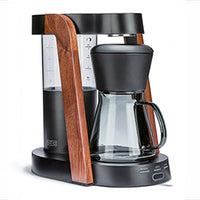 Ratio Eight S2
Ratio Eight S2
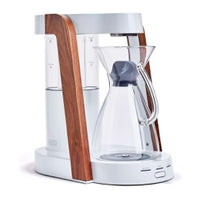 Ratio Eight Original
Ratio Eight Original
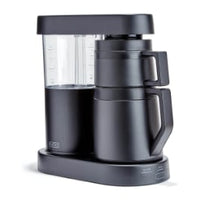 Ratio Six
Ratio Six
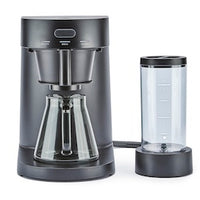 Ratio Four
Ratio Four
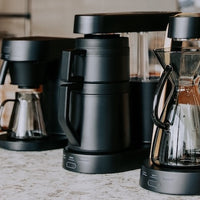 Compare Machines
Compare Machines






